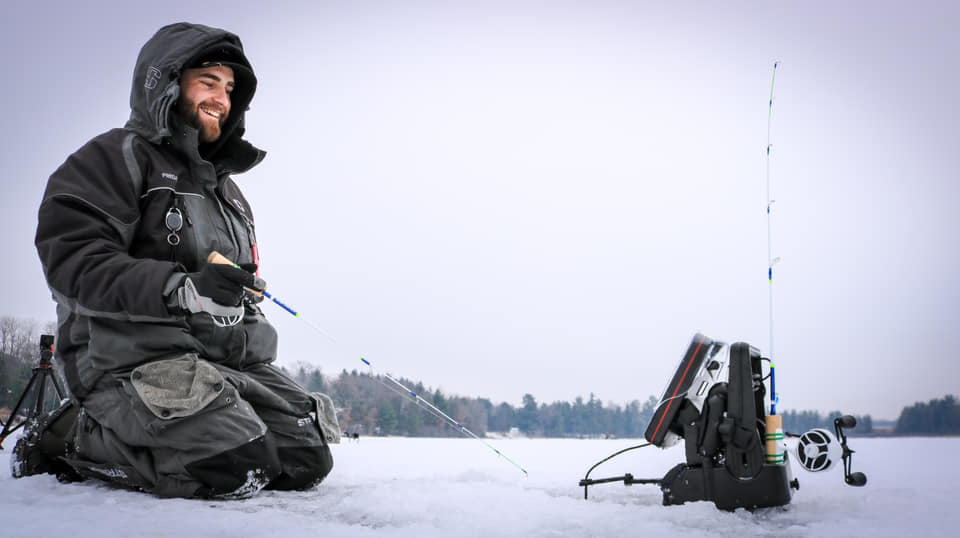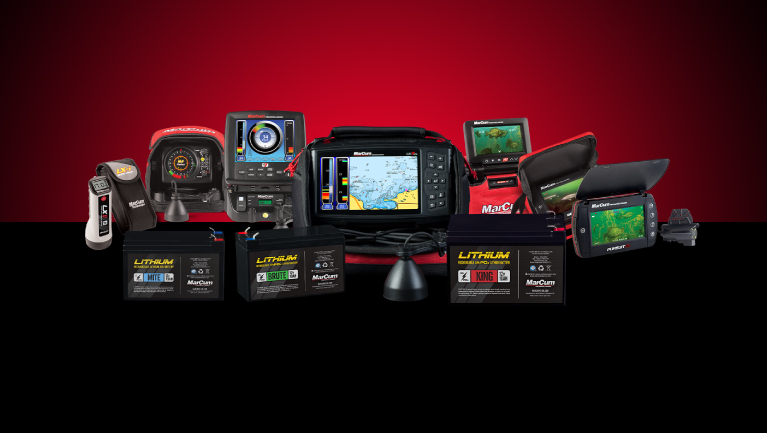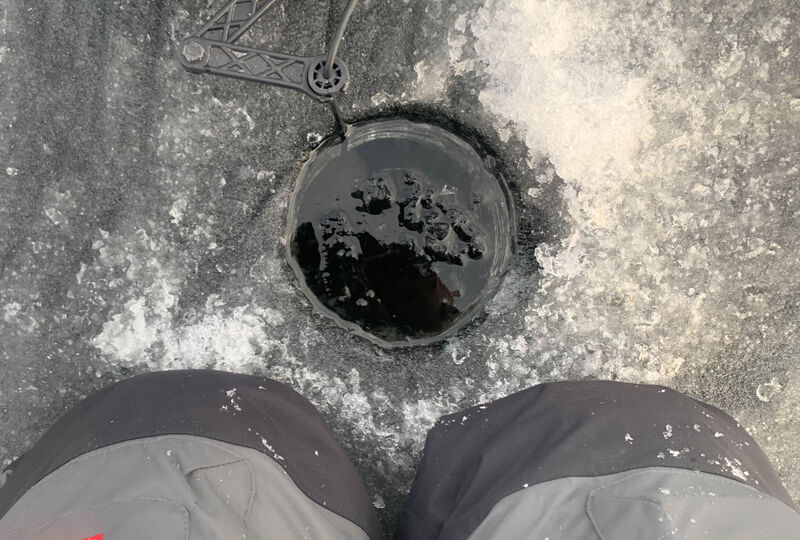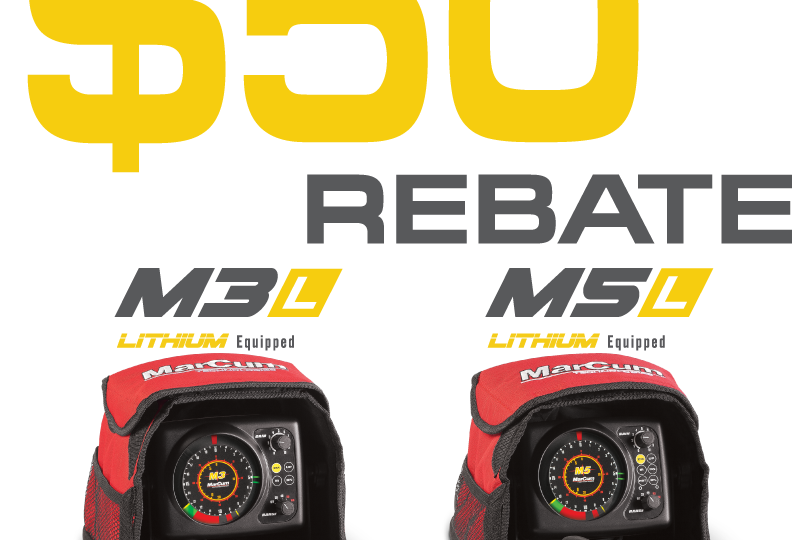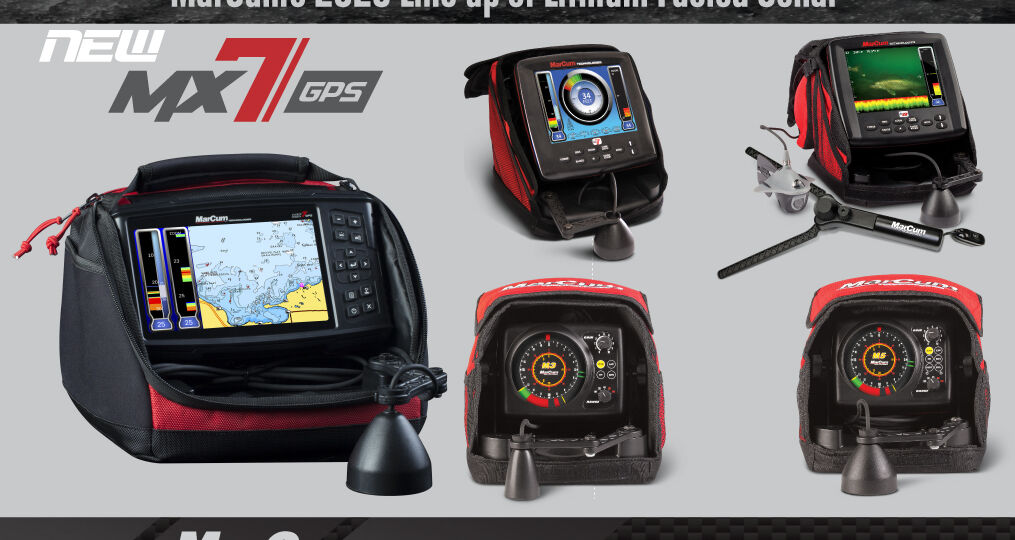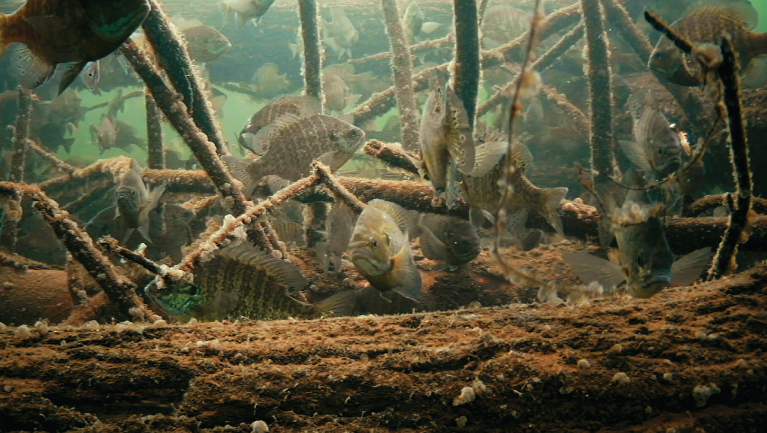Marcum Technologies, the undisputed leader in ice-fishing-specific sonar, takes tech to the next level. Their long-held principle is that features are useless unless they help an angler catch fish, and that can be seen throughout decades of innovation. Patented technology like moveable zoom that led to angler’s ability to target fish anywhere in the water column was the first ping heard round the world among the ice sonar community. They followed it up with additional advancements to help distinguish echoes from noise in an interference rejection system so advanced, it’s also patented.
Electronics are a vital key to success when it comes to hardwater fishing. Sonar units, and underwater cameras alike, both have a specific place in ice fishing. The underwater camera, in particular, has established itself as an important tool. For a number of different reasons, I employ these tools for scouting and fishing on the ice:
Marcum Technologies is a company built upon the sport of ice-fishing, bringing forth patented technology and exclusive features unprecedented in ice electronics. Though at MarCum, our mantra is that features for feature’s sake are worthless unless they put more fish on ice. For the last 20 years, MarCum has brought the bulk of fish-catching invention to the ice market, with a long list of patents, sonar-firsts, and innovations immediately copied by the rest of the industry. MarCum units are hand-built, one at a time, from a blank circuit board on up. All of those advancements have happened right here in the heart of the ice belt, meaning all Marcum sonars are American-made. Below is a list of this year’s systems, and what make them each the top-performing sonar in their respective classes.
The hardwater season is fast approaching. All across the Northern United States and Canada, anglers are taking their first steps on frozen water. Now is the time to ensure electronics, rods & reels, and augers are in working order — and that tackle is fully organized. Aside from the obvious fishing gear, there is some vital equipment you should have before you take that first step on hardwater. Safety concerns are very real throughout the ice fishing season, and especially at first ice. Safety precautions for first ice can be categorized into a handful of major groups.
The all-new MarCum MX-7GPS pairs GPS and mapping with the most advanced, proven ice sonar of all time. Gone are the days of using open-water sonar simply to get GPS capability; welcome an era of ice-specific sonar/GPS innovated for the rigors and mechanics of our sport.
From the industry front-runner in ice electronics, comes a new leader in the batteries that power them. It’s only fitting that MarCum Technologies, in the quest to constantly improve their ice offerings, brings advancements not only in sonar or cameras, but the very power-plants that fuel them.
From MarCum Technologies, the industry champion in ice electronics that serve the angler first, comes a new riff on established innovations. MarCum’s engineering feats have led the sonar space for decades, with a healthy list of patents to prove it. From Interference Rejection (IR) to moveable zoom, our advancements are translated to more fish on ice. A recent improvement comes in the form of a patented “light pipe” – a brushless system that provides razor-thin target returns that give anglers the ultimate in resolution and fish-catching clarity.
Marcum Technologies, the undisputed leader in ice-fishing-specific sonar, takes tech to the next level. Their long-held principle is that features are useless unless they help an angler catch fish, and that can be seen throughout decades of innovation. Patented technology like moveable zoom that led to angler’s ability to target fish anywhere in the water column was the first ping heard round the world among the ice sonar community. They followed it up with additional advancements to help distinguish echoes from noise in an interference rejection system so advanced, it’s also patented.
The new MarCum Pursuit HD puts 20 years of technology into the palm of your hand, tapping into all of the top trends in underwater viewing. The Pursuit HD simply checks every box. Hand-held and HD attributes are a big direction in cameras now, but so often it comes at the expense of other features. With the MarCum Pursuit HD, expect performance with a rich feature set – expect it all.



